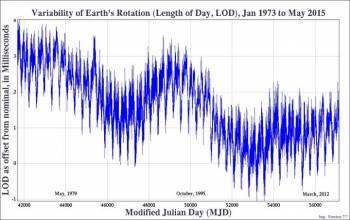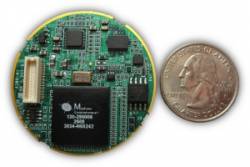As usual, a leap second that will be introduced into the coordinated universal time (UTC) system at 11:59 p.m. tonight (June 30, 2015) may cause some difficulties with devices and services that derive UTC via the Global Positioning System.
As usual, a leap second that will be introduced into the coordinated universal time (UTC) system at 11:59 p.m. tonight (June 30, 2015) may cause some difficulties with devices and services that derive UTC via the Global Positioning System.
GPS system time, unlike UTC, does not use leap seconds; so, additions of leap seconds means that GPS navigation messages must provide updates to the offset between the two time scales. Unlike past introductions of leap seconds during the past 15 years, today’s leap second adjustment is not occurring on a holiday weekday. Of the three leap seconds implemented since 2000, two have been scheduled on December 31 and the most recent was on Sunday, July 1, 2012.
To accommodate a leap second transition, GPS receivers incorporate information from the navigation messages transmitted in the signals from GPS satellites regarding a scheduled future time change due to leap seconds. Key parameters also include the week and day numbers at the end of which a leap second will become effective. Beginning in late January, GPS navigation messages began to include data about today’s addition of a leap second.
Late in May, the Department of Homeland Security’s National Cybersecurity and Communications Integration Center, in coordination with the United States Naval Observatory, National Institute of Standards and Technology, the USCG Navigation Center, and the National Coordination Office for Space-Based Positioning, Navigation and Timing, issued a document describing “Best Practices for Leap Second Event Occurring on 30 June 2015.”
According to the publication, “Systems that receive UTC via GPS should be unaffected by the addition of a leap second if designed properly to account for this extra second.” GPS receivers built in accordance with Interface Specification GPS-200H (IS-GPS-200H) should adjust for this leap second change without the need for physically adjust their receivers’ operation. Interface Specification IS-GPS-200 defines the requirements related to the interface between the GPS space and user segments for on GPS signals transmitted on the L1 and L2 frequencies.
However, Revision H, dated September 24, 2013, was only signed into effect on March 21, 2014, and earlier models of GPS receivers have experienced problems with leap seconds. Difficulties arose earlier this year when some GPS receivers attempted to prematurely incorporate tonight’s GPS-UTC leap second offset information.
In March, GNSS satellite simulator manufacturer Racelogic reported that differences between BeiDou, GPS, and Galileo in designating of a “day number” for the date of applying leap second later this year could cause problems for GNSS receiver manufacturers. A further consideration is that, unlike the other GNSS systems, Russia’s GLONASS does implement leap seconds into its system time.
The leap second correction information broadcast by GPS is contained within the GPS navigation message, sub frame 4, page 18. IS-GPS-200H sections “3.3.4 GPS Time and SV Z-Count” on page 40; “20.3.3.5.2.4 Coordinated Universal Time (UTC)” on page 123; and “30.3.3.6.2 UTC and GPS Time” on page 180 provide detailed information related to the leap second.
The key thing that the agencies suggest needs to be done to avoid problems with a GPS receivers is to ensure that it has been turned on at least once since February 2015, and prior to 11:59 p.m. today, for at least 15 minutes to allow the latest almanac to be uploaded. This almanac contains the leap second notification information in the navigation message.






